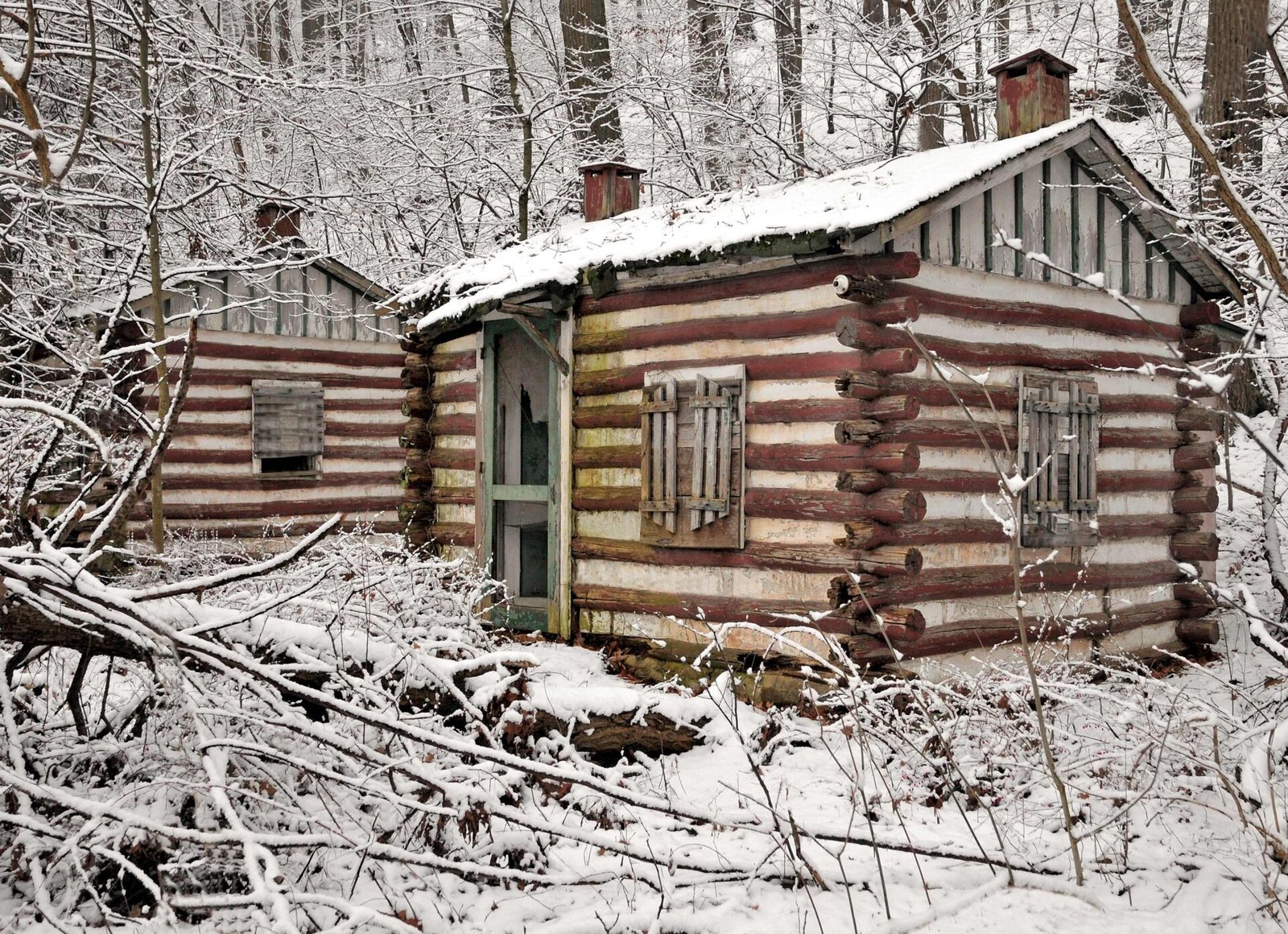When archeologists search for hidden truths embedded in ancient landscapes, they often begin their work near a vital natural feature: water. Aquatic sources are liquid gold for plant and animal species’ development and survival. Ebbert Spring is one of these special places.
At Franklin County’s Ebbert Spring Archeological Preserve and Heritage Park, potential answers to fascinating mysteries are explored and shared through a unique collaboration. Every ceramic shard or purposely carved stone tool found near this watery location is a tantalizing piece in an intricate puzzle. These artifacts help explain how human civilizations originated and evolved.
Ebbert Spring flows continuously in Antrim Township, a short distance south of Greencastle. The Archeological Park bearing its name was formally opened in 2019, but the lasting influences of this pure water source trace back to humans’ earliest societies. Through the combination of a leading archeological organization, a curious property owner, and a prominent historic group, the legacy of Ebbert Spring’s landscape is now saved in perpetuity, a tale of local history that harkens back more than 10,000 years ago.

Entering this park by a lovely tree-lined lane, human habitation is first evident as a handsome stone house comes into view. But travel down this man-made pathway is also a journey into an ancient past. For the road also leads to the central feature that made this land tremendously valuable to native species of flora and fauna- it travels to a place where spring water magically emerges from a secret underground world.
The natural geology of local karst landscapes is defined by underlying layers of limestone, soluble by water. This porous condition leads to the formation of sinkholes, rocky outcrops, and the development of springs. Ebbert Spring is an example of the latter.
Flowing at a continuous 600 gallons per minute and marked by its constant temperature and high PH level, Ebbert Spring has served as a consistent catalyst for prosperity. From the tiniest insects and simplest plant life to the migrations of early natives and settlers, these remarkable waters influenced creatures great and small.
A three-acre portion of the Ebbert Spring property was acquired by The Archeological Conservancy (TAC) in 2006; later other tracts were added by 2016. This organization’s mission is preserving significant sites through land purchases and stewardship. Since 1980, TAC has protected 585 sites across the United States, the only non-profit in North America dedicated to defending irreplaceable resources and their stories.
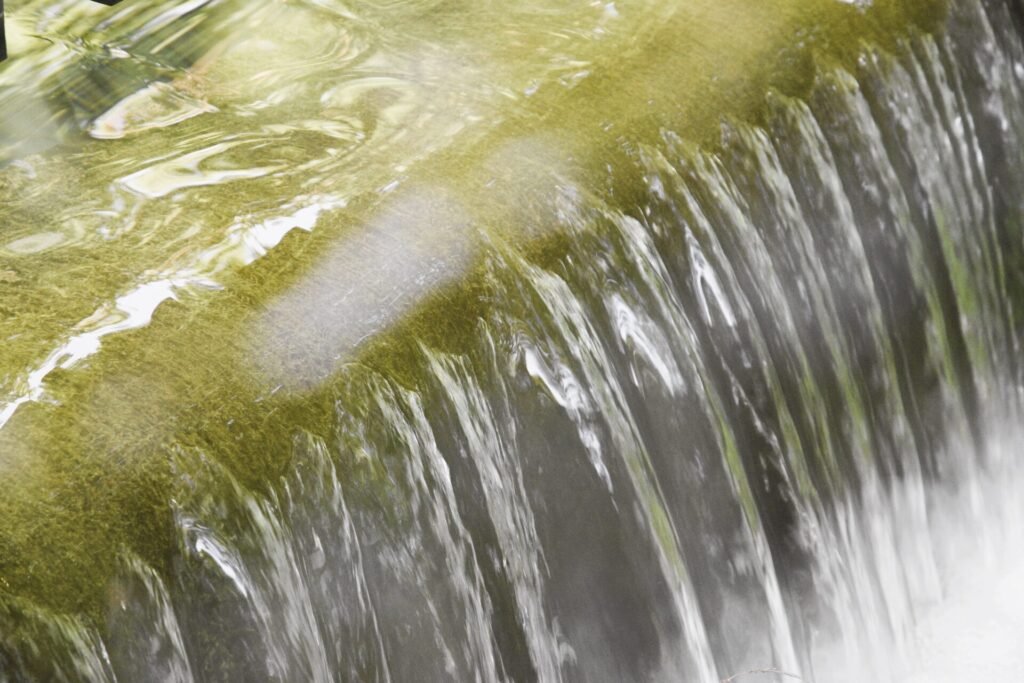
Kelley Berliner is TAC’s Regional Director for its Eastern Division and a skilled archaeologist. Based on her training and research, and bolstered by enthusiastic dedication to these local treasures, Berliner champions Ebbert Spring Archeological Park (ESAP) as one of Pennsylvania’s most significant prehistoric sites.
Over a decade, TAC developed partnerships for ESAP’s protection with local governments, Pennsylvania preservation agencies, and with the Allison-Antrim Museum (AAM). This latter group is led by President Bonnie Shockey, a driving force behind many AAM-sponsored cultural programs. Shockey is recognized as a long-time advocate and curator for Antrim’s historical wonders.
TAC and AAM formed a unique partnership by signing a 99-year lease in 2017, with TAC retaining land ownership and AAM managing the buildings. This beneficial relationship not only ensures the property’s wise preservation, but also resulted in gaining public access to this parcel’s archeologic history.
Today, twelve acres are preserved at ESAP, including the Allison-Ebbert House and a springhouse with a unique backstory. Many improvements were made to the structures and landscape elements to further protect these resources and enhance visitor experiences.
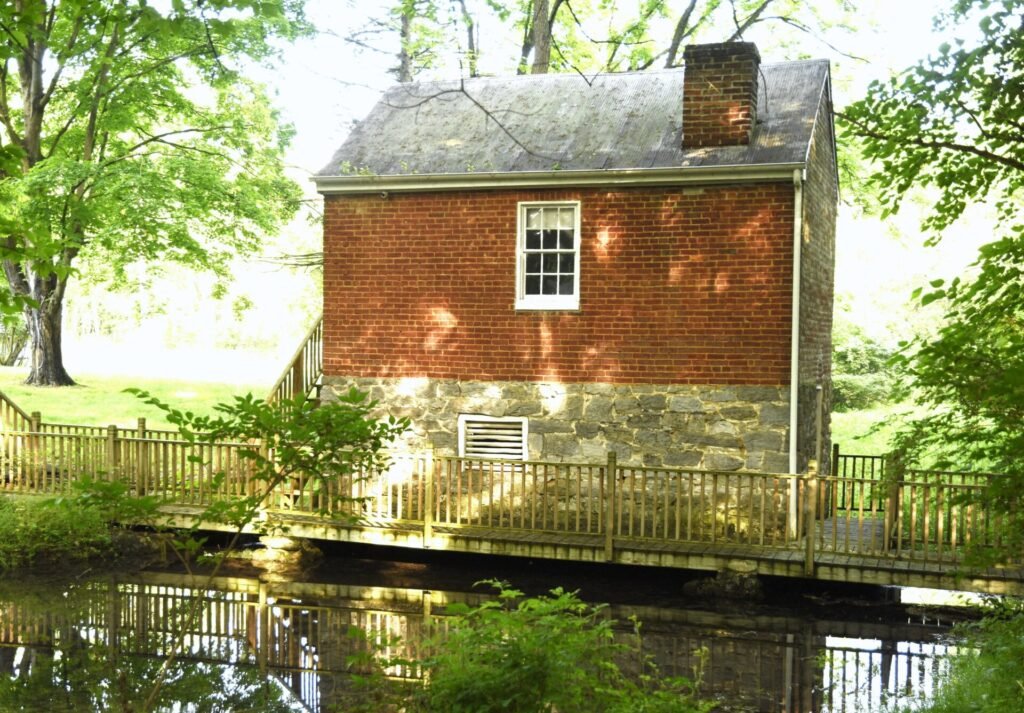
Regarding the stately fieldstone house on the ESAP property, it has been occupied by only four families since construction in 1756. Historians believe William Allison Sr., an immigrant from Ireland, built the home. The structure is sturdy- with walls three-feet-thick. Allison passed the property to his family- one son was John Allison- a Colonel in the Revolutionary War and founder of Greencastle. Allison named his new community and surrounding township in 1782, inspired by a fishing station in ancestral Northern Ireland.
Two later property owners were the Ebbert’s (whose name graces the spring) and the Wishard’s, who occupied this land until 1968. The fourth and final homeowner proved most archeologically significant- his name: Al Bonnell.
Bonnell was a Navy veteran, engineer, and renaissance man. During five decades living on a future portion of the ESAP property, the inquisitive Bonnell uncovered historic artifacts while digging around his garden. His discoveries later kickstarted a formal scientific archeology process. After his death, he wanted this important tract fully protected and further explored to benefit Pennsylvania’s history.
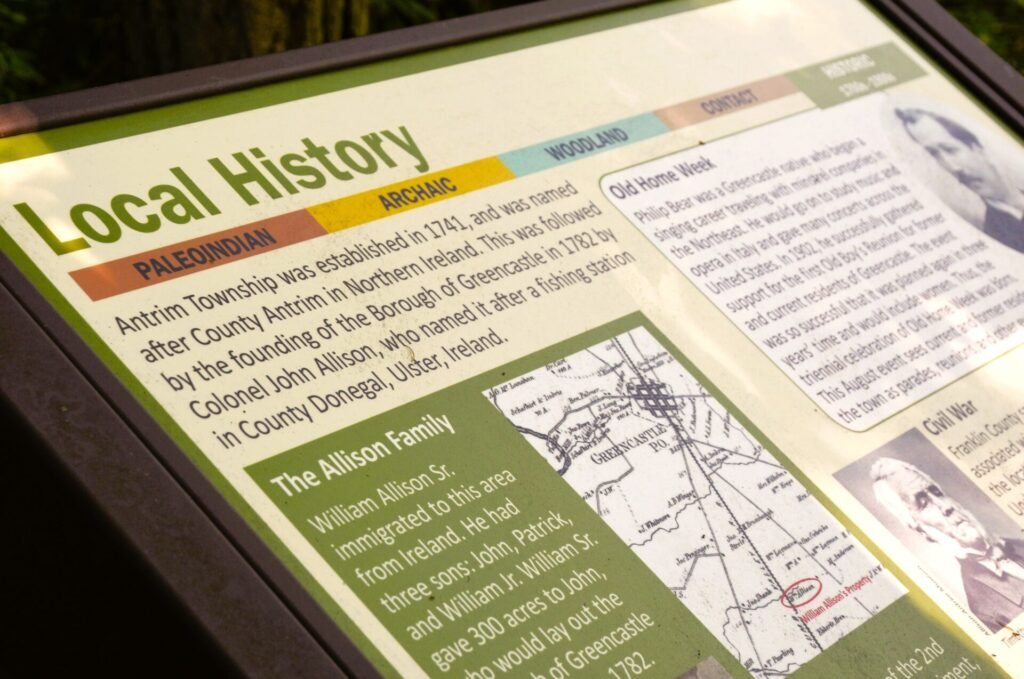
When the Society for Pennsylvania Archeology unearthed further artifacts on these grounds, starting in 2003, they were astounded by a diverse collection containing thousands of items, which included ceramics, animal bones, tools, and decorative pieces.
This portfolio broadened archeological knowledge, since these found pieces reflected several defined eras including the Paleoindian Period, as well as the Archaic, Woodland, Contact, and Historic Periods. The Paleoindian era is defined by humans living in small mobile groups from 10,000 to 16,000 years ago.
Other items left behind included 100 unique projectile points (aptly named for past property owner Bonnell) and additional finds that increased awareness how these artifacts were created, used, and chronicled ancient lives. In addition, archeologists analyzed several ESAP property features, which included storage pits, fire hearths, and postholes.
The archeological lessons learned were significant. These ESAP artifacts redefined thinking about how prehistoric people lived in the Great Appalachian Valley region. Earlier, most experts thought dense inhabitations occurred around larger waterways like the Potomac River. But evidence collected at ESAP suggested freshwater springs were also home to those civilizations.
Additional findings further improved studies. One example is how early European settlers migrated and possibly traded goods with Native Americans during the Contact Period. The large volume of farming implements found on the grounds suggests a long agricultural tradition was practiced at the ESAP site.
No archeological excavations are currently active at Ebbert Spring, and amateur digging for objects is strictly forbidden. The artifact collection discovered here is now housed in a climate-controlled environment at the Allison-Antrim Museum.
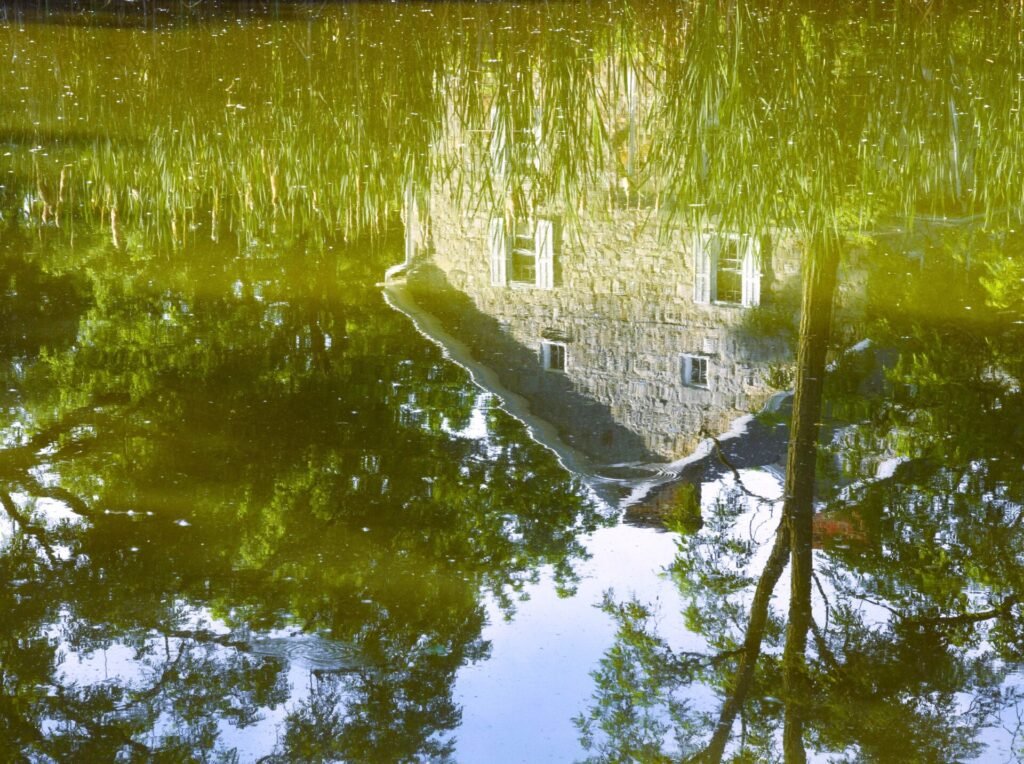
The charming brick springhouse found onsite was also subject to archeological interpretation and yielded a surprising theory. This tame-looking reconstructed building might also have served as a frontier outpost. During the mid-1750s, Pennsylvania’s Governor called for a series of defensive forts during the French and Indian War. Many wealthy landowners from that era built fortifications on their properties.
Archeological evidence found at Ebbert Spring (gunflints and fragments of musket ramrods) suggest the springhouse likely served different purposes during peacetime and war. Today, visitors can enter this serene structure, and hear the spring’s trickling waters passing through its open flooring.
The springhouse is also an idyllic spot to imagine this property’s past- and remember Ebbert Spring as the main catalyst for all that came before- and the chief reason this landscape is so lush today. After its waters filter through this tiny springhouse, they bubble onward, surrounded by a woodland brimming with songbirds like Blue Jays and Catbirds.

Behind the stone house, a manmade pond attracts aquatic insects and reptiles. Wildflowers hug the shoreline, with floral bouquets leaning over blue water. All over the Ebbert Spring’s property, water is the predominant backdrop for a thriving ecosystem.
Ebbert Spring Archeological Park offers walking trails and a series of kiosks explaining the site’s human and natural history. This information ties the property’s components together by showing pictures of found artifacts, giving visitors a thought-provoking archeology lesson.
ESAP is an open-space research and heritage park, accessible every day from dawn to dusk, located at 12633 Molly Pitcher Highway (Route 11) in Greencastle. The front gate is typically closed to vehicle traffic, with parking nearby, so a short but scenic stroll is necessary to reach Ebbert Spring and the surrounding structures.

For more information about the park and its history, visit the Allison-Antrim Museum website: greencastlemuseum.org, or learn about The Archeological Conservancy online at: archeologicalconservancy.org.
Ebbert Spring Archeological Park is a local oasis, serving as an important conservation sentinel. Natural resources are finite treasures requiring constant protection. Despite mankind’s technological advancements, clean water remains the most essential ingredient for our survival and the natural world’s continued health. The artifacts found here suggest ancient civilization’s ample respect for that resource, and the intrinsic beauty witnessed on ESAP’s modern grounds attests to the continuing gift of its magical waters.



